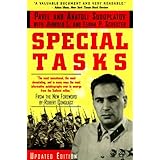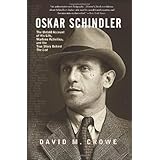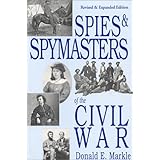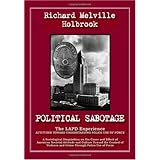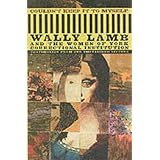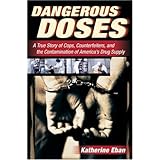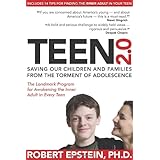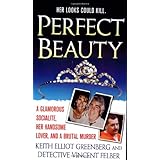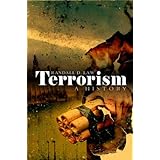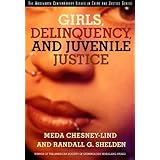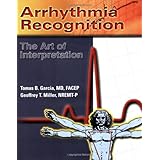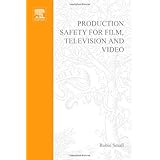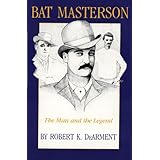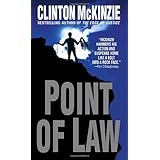
Average Reviews:

(More customer reviews)A very favorable review from Julian Jackson in the Guardian:
In a notorious speech during the 2007 presidential election campaign, Nicolas Sarkozy lambasted the "legacy of 1968" in France for having ushered in "intellectual and moral relativism". This opportunistic gesture towards the conservative electorate was rather surprising since no politician with Sarkozy's tumultuous private life would have had any chance of being elected president without the liberalisation of moral attitudes that occurred in France after May '68. To confuse matters further, once he had been elected, Sarkozy chose as foreign minister Bernard Kouchner, founder of Médecins sans Frontières, who had been an activist in 1968 and sees himself as faithful to the values of that year.
What this shows is that the legacy of '68 remains hotly debated in France, and this readable book by the American academic Richard Wolin is an important contribution to that debate. If people tend to remember May '68 nowadays in terms of sexual liberalisation, at the time protesters spoke the language of Marxism, and Wolin focuses on one particularly radical Marxist group - the French Maoists - whose heyday was the period 1967-73. This might seem a somewhat narrow subject until we remember that the supporters of the Maoists included such luminaries as Michel Foucault and Jean-Paul Sartre (who had nothing else in common).
This was a time when the language of politics was extraordinarily violent. André Glucksmann, now one of the anti-totalitarian "new philosophers" of whom the most famous is Bernard-Henri Lévy, believed in his Maoist phase that France was a fascist country; Sartre called for popular tribunals to counteract bourgeois justice. Not to be outdone, Foucault advocated a "people's justice" without courts on the lines of the September massacres of 1792.
Curiously the Maoists had missed out on 1968 itself. Blinded by dogmatism, they assumed that an event led by students could not be serious. It must be a plot hatched by de Gaulle and the French state as a pretext to crush the proletariat. This complete contradiction between the reality on the streets and what theory said must be happening caused one Maoist leader, Robert Linhart, to have a nervous breakdown. After May 1968, they tried to make up for lost time, and achieved notoriety when de Gaulle's successor, Georges Pompidou (ignoring de Gaulle's wise maxim regarding Sartre: "you do not arrest Voltaire"), arrested two of their leaders and outlawed their newspaper. Suddenly they become a cause célèbre. The Rolling Stones even interrupted a Paris concert in 1970 to allow a French Maoist to address the audience.
Sartre's flirtation with the Maoists is especially interesting. In the 60s, Sartre's philosophy of political engagement had been eclipsed by the fashion for structuralism, which abolished agency and the "subject". Structuralism was potentially fatalistic about the prospects for political change: "structures do not take to the streets", observed the philosopher Lucien Goldmann. Then in 1968 "events" suddenly asserted themselves after all. Sartre was the only member of the intellectual old guard to be invited to address the students in the occupied Sorbonne. What attracted Sartre to the Maoists - and vice versa - was their energy, anger, voluntarism and moral outrage.
For others Maoism was merely a question of opportunism. Wolin has a chapter on the Maoist flirtation of the literary journal Tel Quel, whose editor, Philippe Sollers, has jumped on every political bandwagon (though always a little late). In the 1960s he supported art for art's sake in the form of the hermetic new novel, then moved to Stalinism, then Maoism, until finally in 1978 he called for a vote for the centrist Giscard d'Estaing. The Tel Quel group visited China in 1974 and were enthused by what they saw. When a repentant French Maoist later said to his former Chinese guide that he had been shown only the positive side of communism, the response was: "we showed you what you wanted to see." Julia Kristeva, one of that group, was so taken by China that she praised the barbaric practice of binding women's feet as an example of the power of Chinese women. My only complaint about Wolin's book is that he spends too much time on Kristeva, who perfectly exemplifies the capacity of intelligent people to write nonsense in impenetrable prose.
There are no Maoists left now except for the unrepentant - but now bizarrely fashionable - philosopher Alain Badiou, who is still willing to defend the Khmer Rouge with Mao's chilling comment "the revolution is not a dinner party". But Wolin's book is not just about a strange few years of political folly. He argues that by a process of unintended consequences Maoism allowed a generation of French political activists to rediscover the language of human rights. This is not a totally original argument, but Wolin expounds it effectively. The Maoists might live with "China in our heads", as the saying went, but their political activism also caused them to explore what French society was really like.
Following Mao's dictum that "one must get down from the horse in order to pluck the flower", many idealistic young Maoist radicals went to work in factories. In the same spirit Foucault helped to found the Prison Information Group (GIP) to investigate and denounce the conditions in French prisons. This experience led him to substitute Sartre's idea of the all-knowing "universal" intellectual with that of the "specific" intellectual who comments only on concrete cases that he knows about. In another curious twist of history, it was through a Maoist-influenced group called Vive la Révolution that homosexual liberation first entered French radical politics in 1971.
For Wolin, then, if France is today less authoritarian than it once was, with a more active associative life where many people are engaged in causes such as the defence of sans-papiers - illegal immigrants - that is one of the legacies of the strange Maoist moment. If that's true, no wonder Sarkozy dislikes May '68 so much.
Click Here to see more reviews about:
The Wind from the East: French Intellectuals, the Cultural Revolution, and the Legacy of the 1960sMichel Foucault, Jean-Paul Sartre, Julia Kristeva, Phillipe Sollers, and Jean-Luc Godard. During the 1960s, a who's who of French thinkers, writers, and artists, spurred by China's Cultural Revolution, were seized with a fascination for Maoism. Combining a merciless expos of left-wing political folly and cross-cultural misunderstanding with a spirited defense of the 1960s, The Wind from the East tells the colorful story of this legendary period in France. Richard Wolin shows how French students and intellectuals, inspired by their perceptions of the Cultural Revolution, and motivated by utopian hopes, incited grassroots social movements and reinvigorated French civic and cultural life.
Wolin's riveting narrative reveals that Maoism's allure among France's best and brightest actually had little to do with a real understanding of Chinese politics. Instead, it paradoxically served as a vehicle for an emancipatory transformation of French society. French student leftists took up the trope of "cultural revolution," applying it to their criticisms of everyday life. Wolin examines how Maoism captured the imaginations of France's leading cultural figures, influencing Sartre's "perfect Maoist moment"; Foucault's conception of power; Sollers's chic, leftist intellectual journal Tel Quel; as well as Kristeva's book on Chinese women--which included a vigorous defense of foot-binding.
Recounting the cultural and political odyssey of French students and intellectuals in the 1960s, The Wind from the East illustrates how the Maoist phenomenon unexpectedly sparked a democratic political sea change in France.

Click here for more information about The Wind from the East: French Intellectuals, the Cultural Revolution, and the Legacy of the 1960s
